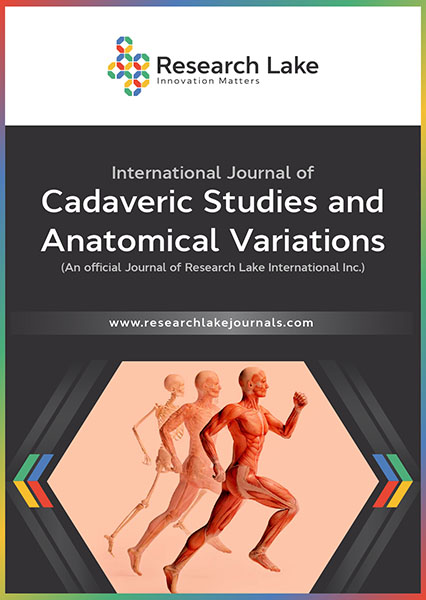Cadaveric Study: Sign of Leser-Trélat Associated with Breast Cancer
Abstract
INTRODUCTION: Seborrheic keratoses (SK) is considered the most common benign skin lesions found in individuals that are middle aged and older. In dermatology practice, these lesions pose no threat to the individual but can be concerning for cosmetic and underlying malignancy reasons when they cover most of the skin surface. Of specific concern is the sign of Leser-Trélat, which has been documented as a cutaneous harbinger of underlying malignancy associated with proliferation of the size and/or number seborrheic keratoses. The rare sign is usually caused by malignancies such as gastrointestinal adenocarcinoma, but also lung, kidney, liver, or pancreatic cancer. This case report will describe the histology of the skin lesions in Lesar Trélat and analyze the current literature regarding its association with breast cancer, which is quite rare.
RESOURCES: For this case study, a cadaver from the body donor program in Philadelphia College of Osteopathic Medicine (PCOM), South Georgia was used. Skin samples were sent to Colquitt Regional Center for processing, where sections were embedded in paraffin and were stained with H&E stain. A pathologist reported histopathological findings of the skin lesions and the breast tissue samples.
DESCRIPTION: Multiple SK lesions covering the face, abdomen, back, as well as both upper and lower extremities were observed in one of the cadavers in the gross anatomy laboratory. Due to the significant number of pigmented, verrucous lesions, the sign of Leser-Trélat was clinically postulated, later confirmed during routine laboratory dissection of the breast tissue. Histology sections confirmed not only multiple SK lesions in the skin, but also revealed an associated breast cancer in the form of an infiltrative ductal carcinoma.
SIGNIFICANCE: The sign of Leser-Trélat is rare by itself and its association with breast cancer is even more uncommon. Once a clinician recognizes the multiple SK eruptions, the patient should be meticulously investigated for not only for an underlying GI malignancy, but also for other cancers like breast cancer. Additionally, a case report confirmed malignant melanoma that mimicked sign of Leser-Trélat, warranting the importance of further analyzing the pathology diagnosis when there is a proliferation of multiple seborrheic keratoses.Therefore, biopsy and histology diagnosis is crucial for ruling out both cutaneous as well as underlying malignancies and should be encouraged when patients present in clinic rather than assuming the typical benign characteristics of seborrheic keratosis.
Copyright (c) 2024 Brigitte Cochran, Savita Arya, Shiv Dhiman

This work is licensed under a Creative Commons Attribution-NonCommercial 4.0 International License.
Copyright © by the authors; licensee Research Lake International Inc., Canada. This article is an open access article distributed under the terms and conditions of the Creative Commons Attribution Non-Commercial License (CC BY-NC) (http://creativecommons.org/licenses/by-nc/4.0/).















